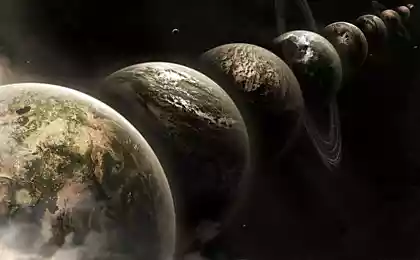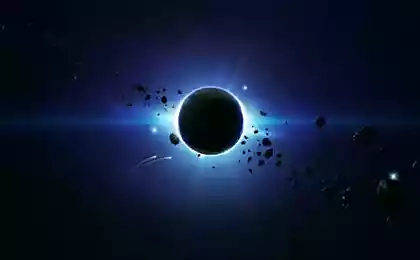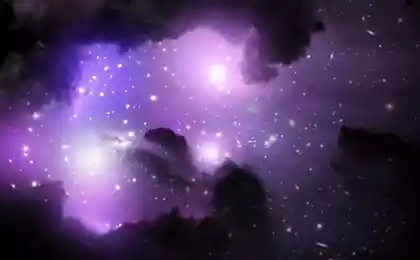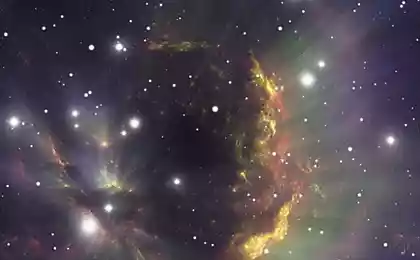Top 10 questions about the universe, the answers to which scientists are looking for right now
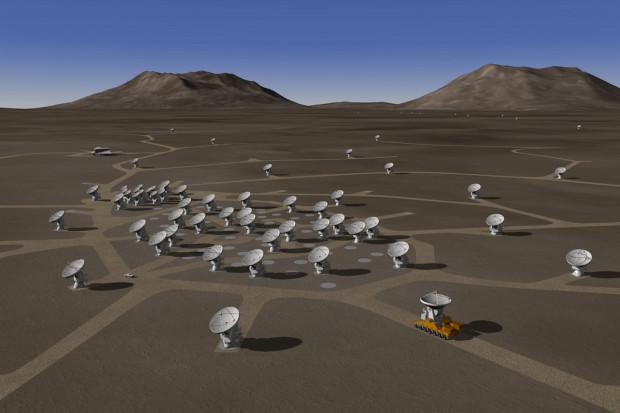
Atacama Large Millimeter / submillimeter Grid (abbreviated ALMA) - is the world's most powerful radio telescope complex, built in the north of Chile. Chajnantor Plateau, where the complex is located at an altitude of 5000 meters - is above most of the objects in the troposfere.ALMA, which means "soul" - it is also a time machine. It looks to the past to check the existing scientific theories about how the 13 billion years ago the universe was created. It pushes us into the future, because we are looking for new worlds and alien zhizn.1 inhabit them. Molecules zhizni
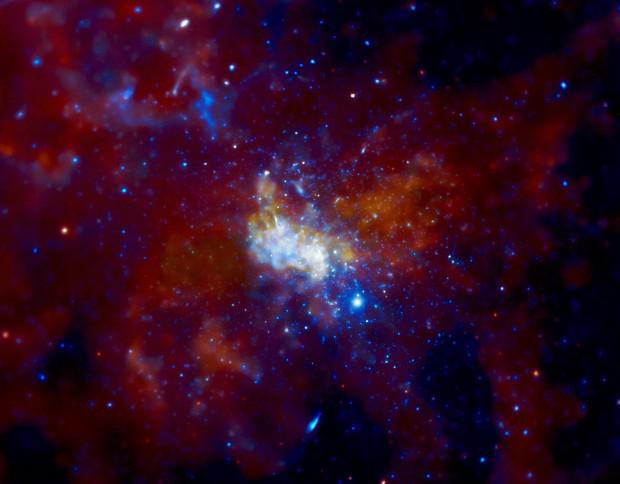
The giant gas cloud Sagittarius B2 near the center of our galaxy ALMA first discovered in interstellar space enriched with oxygen and carbon-containing molecules, similar to those on Earth need for life. The discovery means that in the distant past, such interstellar molecules could get on the ground and affect the appearance of life. There is another assumption: alien life based on carbon can exist anywhere else in Vselennoy.Molekulyarnye like Sagittarius B2 cloud called "stellar nursery" because the dense accumulations of gas and dust are ideal for the formation of stars. Until now, all found in interstellar space organic molecules composed of a straight chain of carbon atoms. But in Sagittarius B2 ALMA I discovered a new molecule - Isopropyl cyanide with branched carbon structure which is at amino acids. Amino acids - the building blocks of protein, a key component of life on Zemle.Otkrytie suggests that necessary for life as we know it, the molecules are created at the same time, when the stars are formed - long before there is a planet like Earth. The Sagittarius B2 isopropyl cyanide much so that branched molecules in interstellar space may be too much. Astronomers hope to find amino acids and tam.2. Merge galaktik
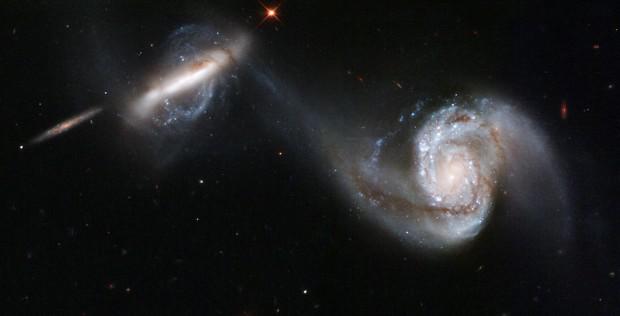
Merging galaxies happens quite often. But in fact, their stars and stellar systems with no face - galaxies pass through each other like ghosts, because the stars are located so far away from each other, which does not face the intense mogut.Sliyanie stimulates the formation of new stars along with gravitational chaos. For a long time it was thought that fusion destroys the original structure of the galaxy, replacing it on a massive elliptical galaxy. So supposedly takes place, even if the two original galaxies were disk (this is, for example, our own Milky Way), which have a "flattened" shape and rounded the field of gas and pyli.Oshibochnoe opinion arose because conducted in the 1970s, computer simulations. But new simulations contradict these results: it is assumed that in some cases as a result of the merger of galaxies formed disk galaxies. But scientists did not have evidence of either of the other teorii.Teper ALMA and other radio telescopes have provided clear evidence of a new theory: 24 of the observed galaxies formed after the merger of disk galaxies. This is - 65% of the 37 galaxies studied by an international research team led by Junko Uedoy of Japan Society for the Promotion nauki.3. Eccentric and inclined orbit ekzoplanet
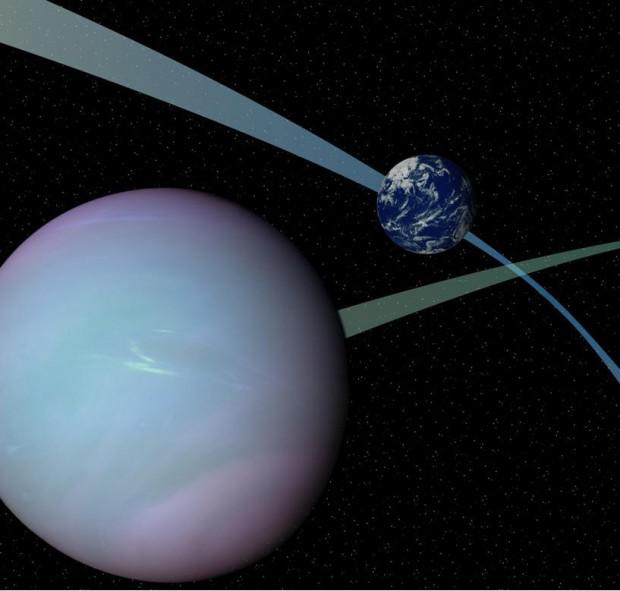
Exoplanets - planets outside our solar system. Some extrasolar planets orbit around a star or highly elongated or oval shape (so-called eccentric orbit), or has a strong angle of inclination of the equator of its star (inclined orbit). This is typical of the double star systems, where two stars orbit each other. To understand why such exoplanets orbit, scientists sent ALMA on NK cells - a young binary system in the constellation Teltsa.Kogda cloud of interstellar gas compressed into himself because of their own gravity, it curls faster and faster until it becomes a disc. In the center of the disc is formed protostar - an embryo in the womb. When the core temperature of the protostar becomes high enough to cause a nuclear reaction, a new star is born. In 90% of cases left over from the birth of stars and dust gas revolve around a new star in the protoplanetary disk. From the material in the disc may eventually form planets, moons and other obekty.V double star system, if the two stars and their protoplanetary disks do not rotate in the same plane (that means they are "offset"), new planets can be formed with high eccentricity or inclination of the orbit. The theory called effect Kozai (Kozai mechanism) said that the first planets orbit the stars appear so strange because of the gravity of the second zvezdy.ALMA confirms this theory for instance NC Taurus. NC faint stars of Taurus B has a protoplanetary disk from which it is reflected light, so that the drive is easily distinguishable in visible light. But protoplanetary disk stars NC Taurus A tilted so that to see him in visible light possible. ALMA easily found both drives in the millimeter wavelengths of light, showing that they are offset from each other by at least 60 degrees. At least one drive is not on the same plane as the orbit of both zvёzd.Eto not explain the strange exoplanets orbit each in the universe. But this shows that the conditions for the exoplanets orbit distortion may occur at the time of formation of the planet in a binary star sisteme.4. The formation of the planets line zhizni
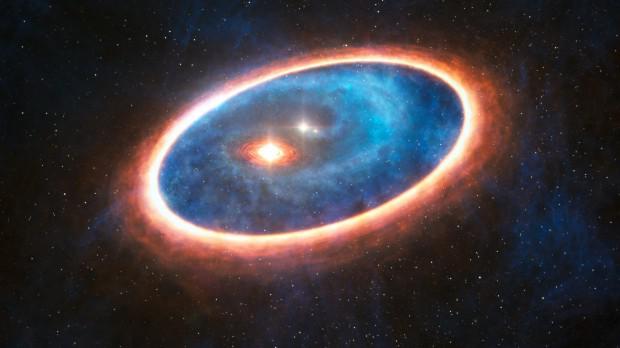
In mnogozvёzdnoy system called GG Tau-A in the constellation Taurus ALMA discovered gas-dust stream. Downstream from a huge external disk around the entire star system, and stretches to a smaller inner disk surrounding both the central star. It's like a wheel in kolese.Uchёnye aware of the existence of the internal disk before ALMA, but could not explain how he survived. The central star is to pull the material from which the disk is so fast that drive long ago had disappeared. But ALMA found never before observed phenomenon: gas accumulations in the area between the two disks, serving a sort of "lifeline" - an external drive "feeds" of inner drive. Therefore, the inner disk may exist for much longer, and therefore more likely that of his material formed planeta.Podobnye "life line" is in many star systems - so "fed" protoplanetary disks. This means that in the distant future we will have more places to search for extrasolar planets and alien zhizni.5. Nebula Bumerang

In 5000 light years from Earth in the constellation Centaurus is the Boomerang Nebula. It is considered the coldest known objects in the Universe. Her temperature is only one degree Kelvin, that is -272 degrees Celsius. Boomerang Nebula is even colder than the CMB, whose temperature is 2, 8 degrees Kelvin - the temperature of the cosmic natural prostranstva.Uchёnye studied the properties of the Boomerang Nebula using ALMA, during which also opened its actual shape. Earlier optical telescopes describes Nebula in visible light in the form of bow-tie boomerangs with two crossed. But ALMA can visualize the wavelengths of light, previously darkened thick band of dust surrounding the star within the nebula. It was found out that the nebula is much wider than originally anticipated. In addition, she quickly found rasshiryaetsya.Astronomy why Boomerang Nebula is so cold. Its central star is dying. From the stars comes the rapid flow of gas that expands and cools both the nebula, as the expansion of gas cools the refrigerator. Since the expansion of the gas is gradually slowing, the outer shell of the nebula becomes teplee.6. Space puzyr
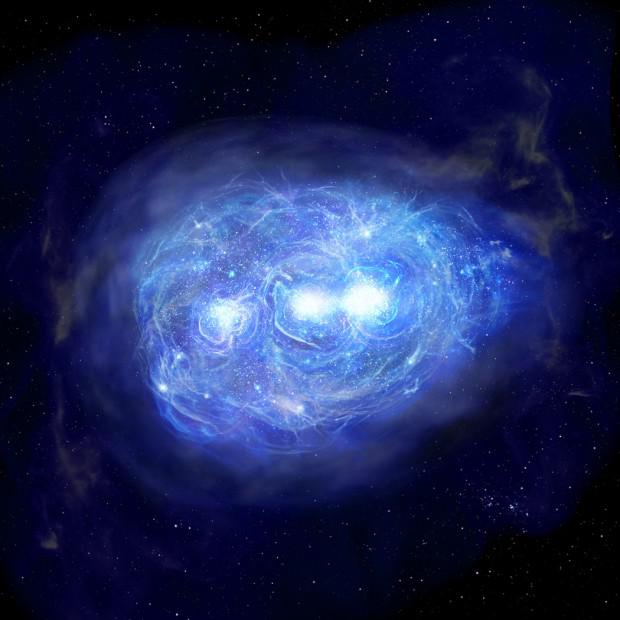
In 2009, astronomers discovered the glowing hot gas bubble, stretching more than 55 000 light-years. He was named in honor of the legendary Himiko Japanese queen. If we consider that the object is almost 13 billion light-years from Earth, and how much time it takes light to overcome this distance, the scientists saw a chemist in a time when the size of the universe was only 6% of the current. For his era Himiko seems too big and powerful telescopes obektom.S "Hubble" and ALMA, astronomers were able to solve some puzzles. "Hubble" has revealed that the chemist has three star clusters, each of which - a luminous galaxy usual for the time dimension. These three clusters of stars formed at an amazing rate of about 100 solar masses per year. Richard Ellis of the California Institute of Technology explains:
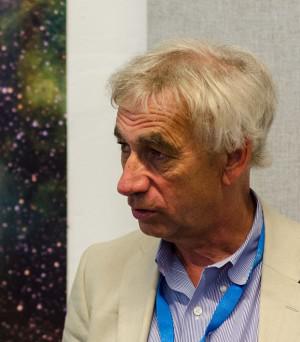
"This is extremely rare triple system visible to us in an era when the universe was only 800 million years. It contains important information about the early stages of galaxy formation during a period known as the "cosmic dawn" when the universe was first lit up the light of the stars. More interesting is that these galaxies seem to be preparing to merge into one massive galaxy, which can eventually turn into something similar to our own Milky Way ». Blockquote> But astronomers scratching their heads over what remained. In the area of the active star-forming cloud of dust must be of heavy elements - carbon, oxygen and silicon. When heated, the light of stars, these elements produce radio waves that ALMA can catch. But ALMA found no significant radio waves. It also found no gas carbon is also associated with an intense zvezdoobrazovanie.Astronomy believe that interstellar gas Chemicals composed of hydrogen and helium. Perhaps it means that we see a primordial galaxy - such as it was shortly after the Big Vzryva.7. Supernovae - factory pyli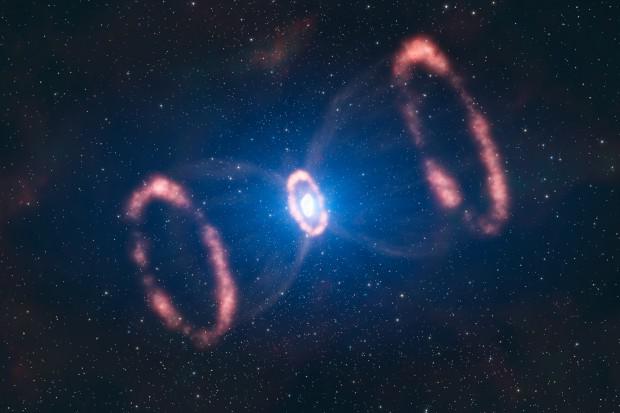
Without dust none of us would not exist. Dust is crucial for the formation of stars and planets. We know that the universe is filled with it, but scientists were not sure exactly how the dust was formed in the young vselennoy.Segodnya most of the dust in the universe appears when dying stars of all sizes and brightness. But in the early universe only young stars turn into supernovae. They explain where it came from a little dust, but this is not enough - in the distant, young galaxies seen more dust. Then with the help of ALMA astronomers studied the remains of the supernova 1987A, and found the "missing" pyl.Kak name implies, SN 1987A exploded in 1987, 168 000 light-years from Earth. Scientists expect to see a lot of dust as carbon, oxygen and silicon are linked in the molecule at the center of the cooling gas from the explosion. Through telescopes of that time, they saw only a small amount of hot dust. But thanks to ALMA, they found a dust cloud with a mass equal to 25% of the mass of our sun. The mystery was solved thanks to the ability to capture ALMA millimeter and submillimeter wavelengths, which emits a bright cold dust. "Most young galaxies are incredibly dusty and this dust plays an important role in the evolution of galaxies, - says Mikako Matsuura from University College London. - Today, we know that the dust created in several ways, but most of the early universe gave dust supernovae. And we finally have direct evidence for this theory "8. The stars in the nebula's death Oriona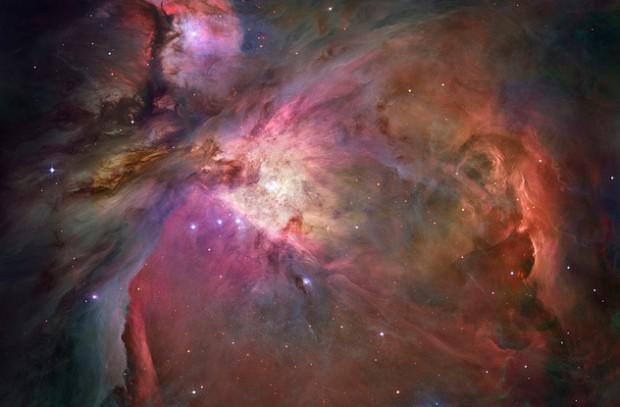
The stellar nursery filled with the substance of the Orion Nebula hidden killer planet.My mentioned that large molecular clouds of gas and dust nebulae such provide excellent environment for the emergence of stars and eventually planets. But in the Orion Nebula There are old O-type stars are much more massive than our sun with the temperature on the surface of 50 000 degrees Kelvin or more. Such O-stars have the power over life and death of planetary systems in the region. When the massive and short-lived O-stars become supernovae, then, according to scientists in the explosion occur clouds of gas and dust - the next stage in the formation of stars and planets. But during his life O-stars can disrupt protoplanetary disks, if the "embryonic" solar systems are to them too blizko.S using ALMA ability to see objects hidden behind dust astronomers were able to visualize twice protoplanetary disks in the Orion Nebula, what was known previously. If a young star is in one-tenth of a light year from the O-stars, the intense ultraviolet radiation scatter protoplanetary disk of the young star before planets have time to form. Because of this extreme electromagnetic radiation of young stars often take the form slezinok.9. Telescope horizon sobytiy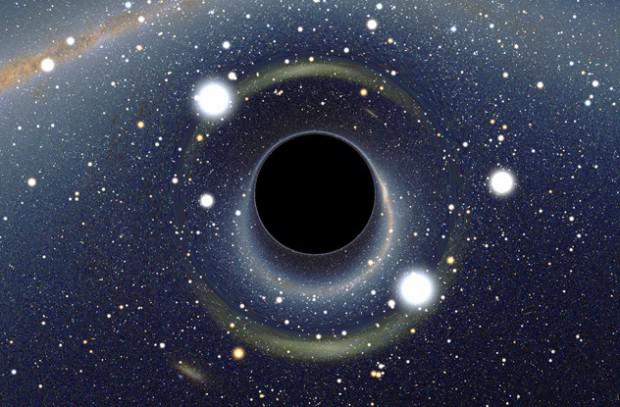
In mid-2014, the scientists installed on the central control panel ALMA ultra-precise atomic clock to synchronize ALMA with a global network of radio telescopes. It was part of the creation of a single instrument the size of the Earth, called the event horizon telescope (CBC).

"By combining advanced millimeter and submillimeter radio telescopes around the world, telescopes of the event horizon will be a result of a fundamentally new device with such a large magnifying power, which has not been more than ever, CBC will open a new era in the study of black holes and give a clear picture of one of the few places in the world, where they can not work to Einstein's theory - at the event horizon ». blockquote> Event Horizon - a theoretical boundary surrounding the black hole. According to the theory, this boundary is a point of no return, where nothing can escape the attraction of the hole, not even light. With CBC scientists want the example of a supermassive black hole at the center of our galaxy and see whether there is actually an event horizon. It is believed that the black hole Sagittarius A with an incredibly small footprint weighs about four million solnts.Takzhe CBC scan Sagittarius A for further verification of Einstein's general theory of relativity: the shadow will look - the dark area where the black hole absorbs light. The shape and size of the shadow, determined by the rotation and the mass of Sagittarius A CBC may show evidence of deformation of space and time in this srede.Krome that astronomers want to observe the collision of Sagittarius, and from G2 - a huge dust cloud, to see how it will affect into a black hole in our galaxy. The clash will last longer goda.10. The birth of the solar sistemy
In November 2014, the ALMA has made the first detailed picture of the planets formed in the protoplanetary disk around a young solar-type star. Star HL Tau is about 450 light-years from Earth in the constellation Taurus. On chёtkom amazing image shows the birth of a new solar system. In addition, it is a kind of window into the past - the same could be produced our Solar System more than four billion years nazad.V visible light HL Tau hidden behind a giant cloud of gas and dust. But ALMA was able to scan a much longer wavelengths, to see through the dust core of the cloud, where the formation of the planets. New picture confirmed the scientific theory of the formation of planet.Eschё ALMA astronomers presented a big surprise. HL Tau is too young for the emerging large planets around it. But the picture clearly visible concentric rings passing through the protoplanetary disk stars. When the increase in size of the planet, it creates these rings separated by gaps where the planets revolve around their young star and push the garbage outside diska.Po apparently born at least eight planets - one for each concentric ring.
via factroom.ru


















